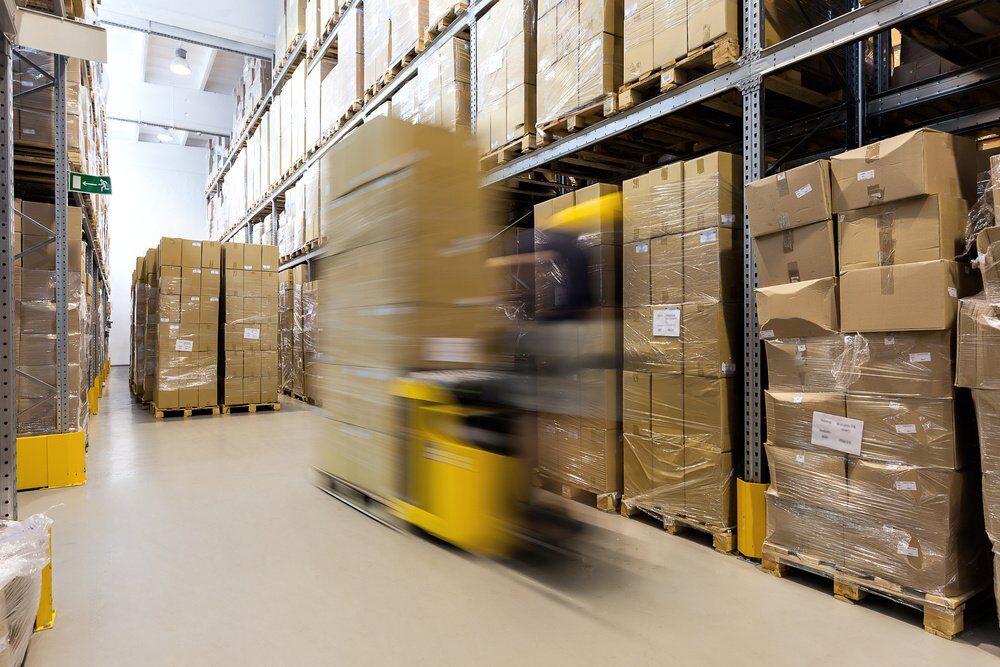Mastering the Carbon Market in Europe: A Practical Guide to EU ETS, ETS 2, and Voluntary Carbon Trading
This guide is essential for business leaders looking to navigate carbon trading in Europe. From...
By: Johannes Fiegenbaum on 4/30/24 11:10 AM

Find out how to register on the CBAM website, fulfill your reporting obligations, calculate default values and submit notifications in my guide. I explain everything you need to know about the CBAM regulation to easily comply with the requirements and procedures.
The Carbon Border Adjustment Mechanism (CBAM) Regulation is a European Union initiative that aims to take into account the carbon footprint of imported goods and ensure that companies outside the EU comply with similar environmental standards as companies within the EU. This system is designed to ensure that companies producing and importing in the EU are not disadvantaged, while at the same time creating incentives for companies from outside the EU to reduce their emissions.
The main objective of the CBAM Regulation is to include emissions from imported goods and to ensure that companies outside the EU comply with similar environmental standards as companies within the EU. By introducing a carbon price on imported goods, the CBAM Regulation is intended to help promote global climate protection and protect EU companies from distortions of competition. In a nutshell: European companies should not be penalized by the market for having higher costs due to environmental regulations, such as a carbon price, than companies with lower environmental regulations. This is also known as "carbon leakage".
The CBAM Regulation will have a significant impact on businesses, especially those bringing imported goods into the EU. Companies will need to prepare for new registration, reporting and notification requirements to ensure compliance with the CBAM Regulation. In addition, companies will need to look specifically at the CO2 emissions of their supply chain in order to quantify the CO2 emissions of their imported goods.
The CBAM takes into account the "actual values" of embedded emissions, which means that decarbonization efforts by companies that export to the EU will result in a lower CBAM payment than for companies that do not take action. The price of CBAM allowances to be purchased for the import of CBAM goods will be the same as for EU producers under the EU Emissions Trading Scheme (EU ETS). The actual effective CO2 prices paid outside the EU will be deducted from the adjustment to avoid double pricing.

CBAM goods include goods from the cement, iron and steel, aluminium, hydrogen, fertilizer and electricity sectors. When importing into an EU member state, the importer must compare the CN code of the goods with the list in Annex I of the CBAM Regulation.
There are two types of CBAM goods, namely simple and complex. "Simple goods" are made from input materials that are considered to have zero embedded emissions according to the CBAM reporting methodology. Therefore, the embedded emissions of simple CBAM goods are based solely on the emissions occurring during their production. For "complex goods", it is necessary to include the embedded emissions of the relevant precursor materials, which are themselves within the scope of CBAM, in the manufacturing process. Relevant precursor materials refer to raw materials that are used in the production of complex CBAM goods and are themselves CBAM goods. In the cement sector, a typical example of a precursor material is cement clinker, which is the main component of Portland cement.
However, after the transition phase, which runs until 2026, it is possible that the EU will include other goods in the CBAM report.
Registration on the CBAM website is the first step that companies must take to comply with the requirements of the Regulation: Customs Portal.
Company information such as name, address, VAT number and contact details are required for registration on the CBAM website. Additional documents such as commercial register entries or EORI numbers may also be required.
The quarterly reports must be completed per importer, per CN code and per installation. There are two ways to enter the data in the CBAM Transitional Registry: Reporting entities can manually enter the data directly into the CBAM Transitional Registry user interface. Alternatively, reporting entities can use an XML structure to upload the CBAM quarterly reports. Once an XML file has been successfully uploaded, a new draft of the quarterly report will be created and can be submitted via the CBAM Transitional Registry user interface. A supporting XLS file that can be used to enter the quarterly report using XML has been published on the Commission's CBAM website.
In the CBAM Transitional Registry, there are mandatory and optional fields marked with an asterisk *. These are also displayed in this sample XLS file.

Article 16 of the CBAM Implementing Regulation provides for the following sanctions:
Companies affected by the CBAM Regulation have to fulfill certain reporting obligations.
The CBAM Regulation will become fully effective on January 1, 2026. From this date, goods affected by CBAM will only have to be released for free circulation by so-called "authorized CBAM declarants". For this purpose, a "CBAM account number" must be indicated in the customs declaration. The EU Commission plans to create a corresponding document coding for this purpose, which must be stated in the customs declaration for release for free circulation.
During the transitional phase, as a declarant subject to reporting obligations, you must send a CBAM report to the European Commission no later than one month after the end of each quarter of a calendar year. According to Article 9(1) of the CBAM Implementing Regulation, amendments to an already submitted CBAM report can in principle be made until two months after the end of the respective reporting quarter, which means that amendments are possible until one month after the submission deadline for the CBAM reports.
Companies must calculate the CO2 emissions of their imported goods and report this data in accordance with the requirements of the CBAM Regulation. This requires accurate recording and analysis of emissions data along the supply chain.

Emissions data is calculated using specific emission factors. The concept of embedded emissions in CBAM is narrower than the scope of life cycle assessments (LCA) and product carbon footprints (PCF). The use of emission factors from LCA databases therefore significantly overestimates embedded emissions. Emission factors from LCAs would thus contradict the objective of the CBAM, which aims to reflect the emissions covered by the EU ETS. In the final phase, importers would otherwise be obliged to surrender too many CBAM allowances if they use these emission factors.
During the transition phase, importers must report both direct and indirect emissions for all goods covered by the CBAM. From 1 January 2026, the scope of the CBAM will be limited to direct emissions for iron/steel, aluminium and hydrogen, while importers of cement and fertilizers will have to report both direct and indirect emissions.
Default values can also be used on a transitional basis until 30.06.2024.
The Commission will carry out an initial review of CBAM reports and provide the competent national authority with a list of incomplete or suspect reports (i.e. if the Commission has reason to believe that they do not comply with the CBAM Regulation). It is then the responsibility of the national competent authority to decide whether it wishes to initiate a review and a possible correction procedure, which may ultimately lead to sanctions.

The calculation of default values is an important aspect of the CBAM Regulation as it serves to quantify the CO2 emissions of imported goods.
The quarterly CBAM report must contain the following information in particular:
Benchmarks serve as reference values for the CO2 emissions of certain categories of goods. They enable companies to quantify their emissions and ensure compliance with the Regulation. Until June 30, 2024 (i.e. CBAM reports are due by July 31, 2024), the reporting declarant may use alternative methods to determine emissions for each import of goods for which not all information is available, including the default values provided and published by the Commission: Greenhouse gas emission intensities of the steel, fertilizers, aluminium and cement industries in the EU and its main trading partners.
Frequently asked questions about the CBAM Regulation to help companies clarify uncertainties and understand the requirements of the Regulation. Compiled from the EU website:
To ensure efficient implementation of the reporting obligations, the Commission has developed an electronic database that collects the information reported during the transition period. The CBAM Transitional Register is a standardized and secured electronic database that contains common data elements for reporting during the transitional period and enables access, case handling and confidentiality. The CBAM Transitional Register for Reporting Persons runs independently from the EU Customs Trader Portal (EUCTP).
In the "Applicable reporting methodology" section, reporters are asked to provide additional information on the monitoring and reporting methodologies used. For example, if actual data for direct and indirect emissions were used to determine specific embedded emissions, reporters can indicate whether the methodology was based on calculations (default or mass balance) or measurements.
In the "Indication of other sources" section, reporters must provide additional information on the source of the emission factor. This may include providing a web link to publicly available data or other relevant sources.
During the transition period, the general rule for the emission factor for electricity is that default values provided by the Commission should be used. However, actual emission factors for electricity can be used if the relevant conditions are met (i.e. the existence of a direct technical connection or a power purchase agreement/PPA as explained above).
Market-based specific emission factors, for example determined by Guarantees of Origin or Green Certificates, cannot be used to justify the use of actual emission factors.
Good cooperation between third country producers and reporting companies is crucial. Ultimately, the reporting company is responsible for ensuring the completeness and accuracy of CBAM reports. The company is liable and may be subject to penalties for non-compliance with CBAM reporting obligations. At the beginning of the transition period (until mid-2024), companies can fall back on default values.
Only goods that are released for free circulation in the EU are subject to CBAM, while goods in transit in the EU are not affected. Similarly, CBAM does not apply to samples of non-EU origin (e.g. sent for testing) that are declared for temporary importation and not released for free circulation.
By the end of the transitional period of the CBAM (end of 2025), the Commission will carry out a comprehensive review of the implementation of the CBAM. This review will carefully consider, inter alia, on the basis of data collected during this period, whether it is possible to extend the CBAM to other goods and sectors covered by the EU ETS that are exposed to a risk of carbon leakage.
An authorized CBAM company is entitled to claim a reduction in the number of CBAM allowances corresponding to the actual CO2 price paid in the country of origin for the declared embedded emissions of CBAM goods. The CBAM Regulation defines a carbon price quite broadly as "the amount of money paid in a third country under a carbon reduction program in the form of a tax, levy or charge or in the form of emission allowances under a greenhouse gas emission trading scheme (...)".
Only the carbon price actually paid in the country of origin will be taken into account for a reduction in the number of CBAM allowances. Should the company benefit from a rebate or other form of compensation, the benefit will be taken into account to determine the actual carbon price paid.
The EU Commission will prepare an implementing act before the end of the transition period in 2025, setting out additional details for the calculation of the carbon price actually paid in the country of origin.
The EU ETS is the world's largest greenhouse gas emission allowance trading scheme and is at the heart of the EU's climate policy to reduce emissions. The CBAM is an instrument that aims to regulate imports of goods from countries without comparable emission standards by putting a carbon price on imported goods. The interaction between CBAM and the EU ETS is complex, as the introduction of CBAM can have an impact on emission prices and the trading of emission allowances in the EU ETS.
The EU Emissions Trading System (ETS) is the world's first international emissions trading system and the EU's guideline for combating climate change. It sets an upper limit on the amount of greenhouse gas emissions that can be released from energy production and large industrial facilities. Allowances must be purchased on the ETS trading market, although a certain number of free allocations are distributed to industry to prevent Co2 leakage. To increase the incentive for decarbonization, the CBAM is gradually introduced while free allocations are reduced. Under the EU ETS, the number of free allocations decreases over time for all sectors. For CBAM sectors, the decrease will accelerate from 2026 onwards so that the ETS can have maximum impact on meeting the EU's ambitious climate targets. At the same time, the financial adjustment of the CBAM will be introduced according to a phased timetable.
The CBAM will be based on a system of allowances corresponding to the embedded emissions in CBAM products imported into the EU. The CBAM deviates from the ETS in some limited areas where this was necessary, as it is not a cap and trade system. For example, and unlike the EU ETS, an unlimited number of allowances can be purchased. Nevertheless, the price of CBAM allowances will be the same as the ETS allowance price.
Once the full CBAM regime enters into force in 2026, the system will be adapted to reflect the revised EU ETS, in particular with regard to the reduction of available free allowances in the sectors covered by CBAM. This means that the CBAM will only be applied to the products covered and in direct proportion to the reduction in free allowances allocated under the ETS for these sectors. Simply put, until free allowances in CBAM sectors are fully phased out in 2034, CBAM will only be applied to the share of emissions that do not benefit from free allowances under the EU ETS, thereby treating importers fairly compared to EU producers.

A solo consultant supporting companies to shape the future and achieve long-term growth.
More about meThis guide is essential for business leaders looking to navigate carbon trading in Europe. From...
CO2 compensation or CO2 reduction for companies? An overview of the various ways in which companies...
Discover how the European Union Deforestation Regulation (EUDR) is reshaping the landscape for...